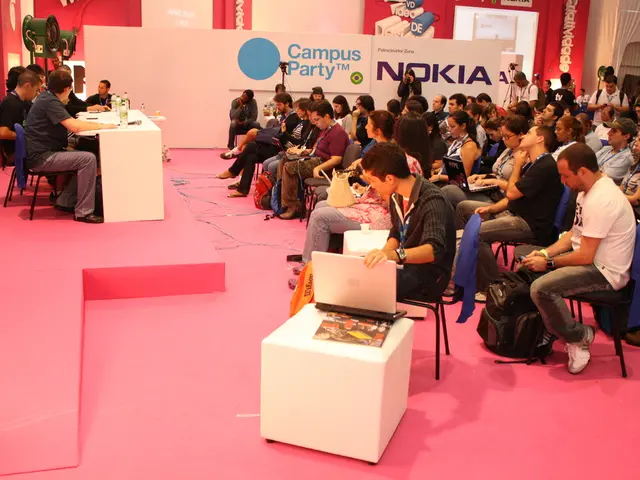The decline of Claire's Accessories points towards a more disheartening broader issue
Claire's Accessories, a popular retailer known for its affordable jewelry and fashion items, is grappling with financial challenges that have led to the filing for bankruptcy protection for the second time in seven years.
The company's financial struggles stem from a combination of factors, including high debt levels, increased competition, shifting consumer behavior, rising import costs, and broader macroeconomic challenges. These factors have resulted in cash crunches, unstable operations, and the need for bankruptcy protection.
High Debt and Debt Obligations
Claire's carries a long-term debt of approximately $496 million due by 2026 and faces a $500 million loan due in December 2026. The pressure to service and defer payments on this debt has severely limited the company's financial flexibility.
Decline in Mall Traffic and Sales
As mall foot traffic declines, Claire's, which is mostly located in malls, has experienced reduced in-store visits and sales, exacerbated by a broader shift to online shopping.
Intense Competition
Competitors like Lovisa attract younger customers with more stylish, affordable jewelry options, while big online players such as Amazon add pressure on pricing and accessibility.
Impact of Tariffs
President Trump's tariff policies have increased import costs for products Claire's sells, pushing up operating costs beyond what the company can effectively manage.
International Challenges
Subsidiaries in France and the UK face insolvency risks or possible sale, with declining revenues and ongoing restructuring efforts, indicating that financial difficulties are global rather than localized.
Store Closures and Bailouts
Claire's plans to close about 1,100 stores amid bankruptcy negotiations, attempting to sell remaining outlets or find strategic partners to keep the business afloat. However, a buyer has not yet emerged, increasing the risk of full collapse.
Despite these challenges, Claire's is currently trading as usual. The potential closure of stores is causing distress among some people, with many saddened by the potential loss of a store that was once the center of every 7-15-year-old's shopping trips.
The downfall of Claire's has left those who grew up in its era devastated, as this generation of teenagers prefers online shopping over in-person mall culture. Some see the potential closure of Claire's as a sign of a larger problem, a concern about a lack of age-appropriate safe spaces for the current generation. Others believe it's a sign of the erasure of tween culture.
Claire's is exploring alternatives to protect the future of the tween fashion store. The company has had a number of letters of intent to buy, but its future is uncertain. Bankruptcy experts are divided on the prospects for Claire's, with some seeing potential for a successful restructuring and others predicting a full collapse.
Social media is blamed by some for the shift in tween culture, with Trump's tariffs estimated to increase the cost of goods sold for Claire's by $30 million. The closure of Claire's is seen as a recession indicator by some, a sign that the retail industry is struggling under the weight of changing consumer habits, increased competition, and rising costs.
As Claire's navigates these challenges, it faces a culture shift with teens no longer wanting to be seen as teens. The company must find a way to adapt to this changing landscape to secure a future for tween fashion.
- The financial difficulties experienced by Claire's are due in part to the high debt levels, with approximately $496 million in long-term debt due by 2026 and a $500 million loan due in December 2026.
- As mall foot traffic declines, Claire's, which is mostly located in malls, has suffered reduced in-store visits and sales due to a broader shift to online shopping and intense competition from retailers like Lovisa and online giants such as Amazon.
- The impact of tariffs has also been significant, as President Trump's tariff policies have increased import costs for products that Claire's sells, pushing up operating costs beyond what the company can effectively manage.




